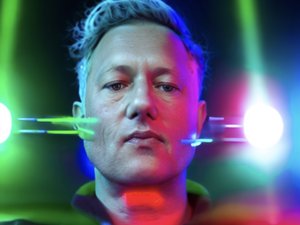
A Boston-based startup developing an in-ear wearable to better understand illnesses like long Covid and postural orthostatic tachycardia syndrome, or POTS, is emerging from stealth today after three years of work.
STAT Health, founded by two former leaders of audio giant Bose's Health Product Innovation Group, is backed by $5.1 million in seed funding from J2 Ventures, BonAngels Venture Partners and angel investors, as well as grant funding from the U.S. Air Force.
Co-founders Daniel Lee and Paul Jin say their new technology, which measures blood flow to the head, can shed greater light into fainting, brain fog or headaches, symptoms often tied to these diseases.
Building an ear specialty
Lee’s foray into in-ear technologies began in college. During his senior year at the University of California San Diego, he launched his first startup, Hush, making smart earplugs. After two years the company was acquired by Bose, which brought Lee to the East Coast. At Bose he kept working on "sleepbuds", or what he called “Hush 2.0.”
Then, Lee said he was given the opportunity to lead the Health Product Innovation Group and began working with Jin. Lee said that after a year and a half, Bose began investing less in innovation work. The Framingham maker of headphones and other audio equipment has seen its revenue fall by 27% in the past five years, the Business Journal reported earlier this year.
Lee said he and Jin decided to leave Bose and start their own venture “a week before the world fell apart” in March 2020.
The idea for STAT Health came from Lee’s personal experiences. His father has dealt with heart issues and fainting over the last few years. Lee said a few months before he left Bose, his father had passed out and broke six ribs.
“This is clearly a problem for him. It’s a huge stress on the family. There’s got to be something we can measure about what’s going on here,” Lee said.
In speaking with doctors, Lee said he found that these symptoms are caused by not enough blood flowing to the head after standing up. Normally when someone stands up, gravity pulls the blood into their legs, Lee said. The body then squeezes the blood vessels in the legs to push the blood back up. Sometimes this doesn’t function correctly and the blood isn’t pushed back up to the heart and head. The heart will try and pump faster to compensate for this, Lee said, but it is essentially “dry heaving” because there is not enough blood.
Lee said he also learned that fainting or other issues caused by disturbed blood flows are not just common in older adults. About 90% of the people impacted by POTS are female and usually develop symptoms in the late teens and twenties.
More recently, Lee said researchers are looking at how blood flow impacts the dizziness and brain fog experienced by people with long Covid.
A new in-ear device
After learning how debilitating these illnesses and their symptoms can be, Lee said their team set out to make a device to help people better understand what was going on in their bodies.
Lee described STAT Health’s technology as similar to continuous glucose monitors. He said these devices help people with diabetes manage their blood sugar. The data from these monitors help people make lifestyle choices to maintain a certain blood sugar level.
“We want to kind of copy that model but for cardiovascular disease and all of these things where heart disease causes symptoms, like what POTS patients are experiencing,” Lee said. “If we can give them the ability to measure what matters, then we can help them understand their bodies better. They can also make adjustments to their lifestyle to better stabilize blood flow to the brain.”
The startup’s wearable hooks onto folds in the ear and measures blood flow optically via an ear artery. STAT said the wearable has a multi-day battery life and a micro solar panel for charging.

“We’re basically measuring the external artery in the ear and then doing some machine learning, AI, to then map it to what’s going on internally,” Lee said.
The information gathered through the device will be available for users in an app. Lee said the device detects every stand and analyzes how the body responds. That information is distilled into an “Up Score,” which looks at time spent upright, and a “Flow Score,” which studies blood flow changes. The aim is to help users pace their recovery by watching for blood flow abnormalities.
The device does not need FDA approval at this time, because they are not claiming they can cure the disease areas they are targeting, Lee said.
Lee said the company will launch its first small production batch and shipments early next year. For now, the startup is collecting applications for its VIP list, which will have access to testing opportunities.
Sign up for The Beat, BostInno’s free daily innovation newsletter from BostInno reporter Hannah Green. See past examples here.








